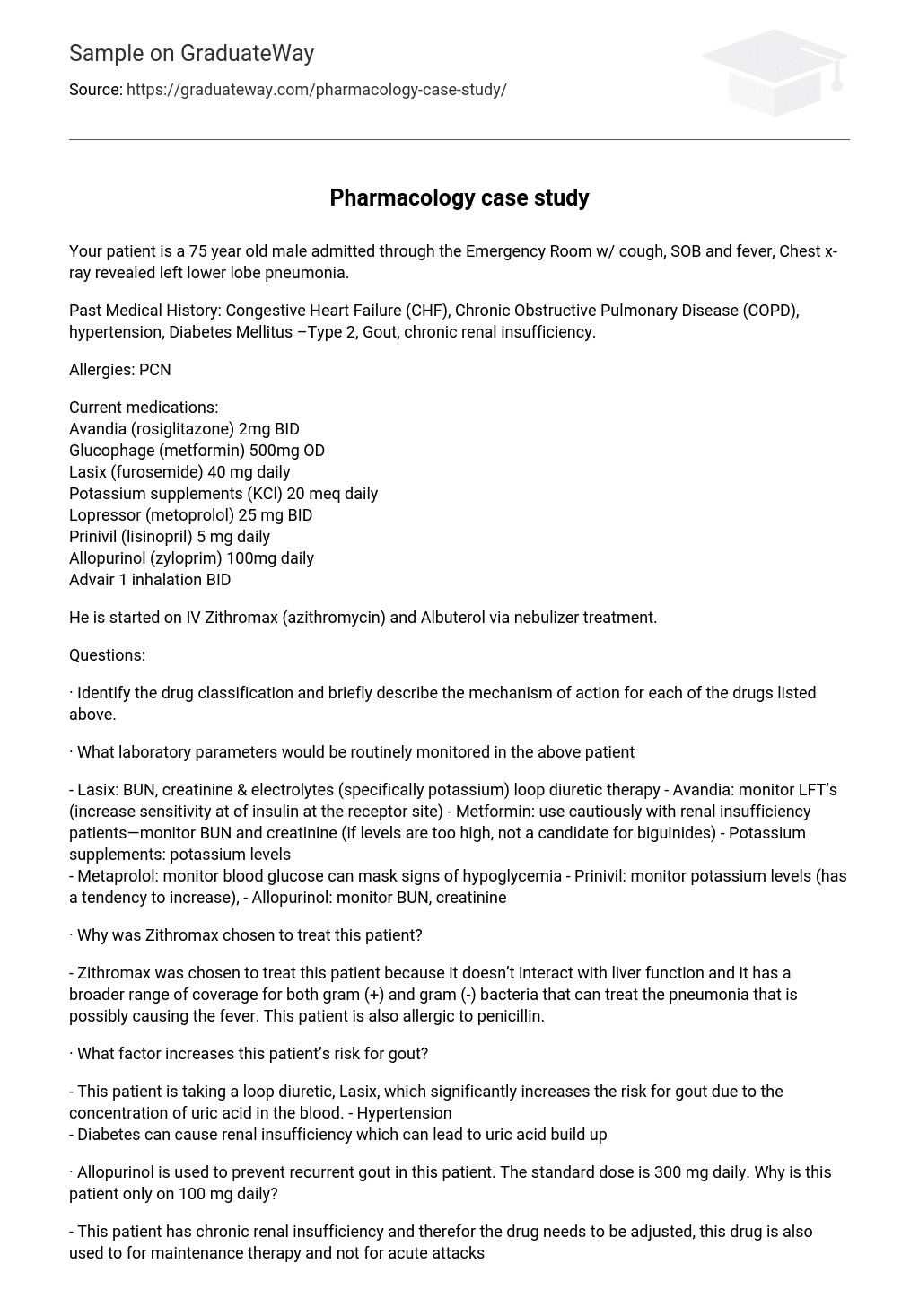Your patient is a 75 year old male admitted through the Emergency Room w/ cough, SOB and fever, Chest x-ray revealed left lower lobe pneumonia.
Past Medical History: Congestive Heart Failure (CHF), Chronic Obstructive Pulmonary Disease (COPD), hypertension, Diabetes Mellitus –Type 2, Gout, chronic renal insufficiency.
Allergies: PCN
Current medications:
Avandia (rosiglitazone) 2mg BID
Glucophage (metformin) 500mg OD
Lasix (furosemide) 40 mg daily
Potassium supplements (KCl) 20 meq daily
Lopressor (metoprolol) 25 mg BID
Prinivil (lisinopril) 5 mg daily
Allopurinol (zyloprim) 100mg daily
Advair 1 inhalation BID
He is started on IV Zithromax (azithromycin) and Albuterol via nebulizer treatment.
Questions:
· Identify the drug classification and briefly describe the mechanism of action for each of the drugs listed above.
· What laboratory parameters would be routinely monitored in the above patient
– Lasix: BUN, creatinine & electrolytes (specifically potassium) loop diuretic therapy – Avandia: monitor LFT’s (increase sensitivity at of insulin at the receptor site) – Metformin: use cautiously with renal insufficiency patients—monitor BUN and creatinine (if levels are too high, not a candidate for biguinides) – Potassium supplements: potassium levels
– Metaprolol: monitor blood glucose can mask signs of hypoglycemia – Prinivil: monitor potassium levels (has a tendency to increase), – Allopurinol: monitor BUN, creatinine
· Why was Zithromax chosen to treat this patient?
– Zithromax was chosen to treat this patient because it doesn’t interact with liver function and it has a broader range of coverage for both gram (+) and gram (-) bacteria that can treat the pneumonia that is possibly causing the fever. This patient is also allergic to penicillin.
· What factor increases this patient’s risk for gout?
– This patient is taking a loop diuretic, Lasix, which significantly increases the risk for gout due to the concentration of uric acid in the blood. – Hypertension
– Diabetes can cause renal insufficiency which can lead to uric acid build up
· Allopurinol is used to prevent recurrent gout in this patient. The standard dose is 300 mg daily. Why is this patient only on 100 mg daily?
– This patient has chronic renal insufficiency and therefor the drug needs to be adjusted, this drug is also used to for maintenance therapy and not for acute attacks





